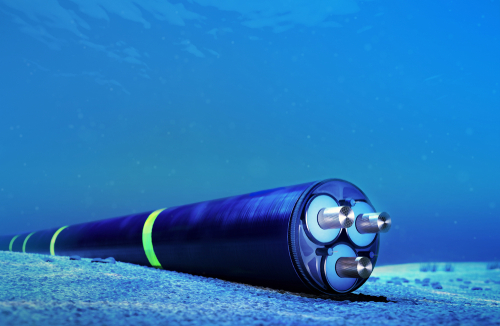The ‘world’s longest’ undersea cable and land electricity interconnector, with capacity to power up to 2.5 million homes, has begun commercial operations between the UK and Denmark.
The National Grid Plc announced on Friday that it had energized the 1,400-MW Viking Link electricity interconnector.
With a length of 764 km, the link will go from Lincolnshire to Bicker Fen substation and Revsing in Denmark. The link will be able to transmit electricity that will power up to 2.5 million UK homes through UK, Dutch, German and Danish waters. This has been accomplished by a joint venture between Danish transmission system operator (TSO) Energinet and National Grid Ventures, costing about GBP 1.7 billion.
The project is expected to enable consumers to save an estimated £500 million in the next decade as a result of the cheaper electricity imported from Denmark. This will be National Grid’s sixth interconnector, whose construction started in 2019 before the final part of the state-of-the-art high-voltage subsea cable was laid in July.
The high-voltage direct-current (HVDC) Viking Link, whose construction started in 2019, will initially operate at 800 MW and will reach 1.4 GW over the current year
Also read: UK to build its Largest Battery Energy Storage System
In 2022, National Grid partnered with Dutch Tennet to develop a 1.8 GW interconnector project that led to the installation of cross-border direct current cable to connect offshore wind between the UK and the Netherlands.
Sustainability
Interconnectors are poised to play an essential role in the clean energy transition as they allow nations to trade excess renewable power with neighbouring countries, make it easier to balance supply and demand and result in lower greenhouse gas emissions.
Viking Link, in its first year, is expected to save about 600,000 tonnes of carbon emissions. This equates to taking over 280,000 cars off the road. By 2030, 90% of the energy imported through National Grid’s interconnections will come from zero-carbon energy sources, helping to avoid approximately 100 million tonnes of carbon emissions in the UK.
The cable consists of converter stations at each end of the cable, where the power is transformed into the correct frequency before being transported onwards.
Earlier last year [2023], National Grid announced a partnership with TenneT for the construction of an interconnector between the UK and the Netherlands, called LionLink with a capacity to produce up to 1.8 GW. The link will also connect to offshore wind generation, be the second link between the two countries, and be expected to be operational in 2030. Another independent link is in the works with the potential to connect with Belgium, named Nautilus.

